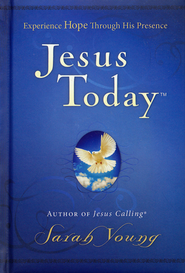AUTHOR: Matt Litton
PUBLISHER: Nashville, TN: Abingdon, 2012, (246 pages).
What is life all about? What does it mean to live as a Christian? Are we practicing a form of spiritual Stockholm Syndrome, of preferring to be enslaved by the world, even though we have been freed in Christ from the worldliness at large? Are we overly consumed with protecting our turf? Are we rushing to preserve our material possessions and personal reputations? Are we waiting for others to take the first step in doing a good deed? These and many more are addressed through a series of movements.
Movement One recognizes the predicament the human condition is in, that we are living in a kind of a "life sentence" of sin and restlessness.We are trapped in a culture of materialism, fragmentation of communities, religion, and others. Our own "kung fu," is not enough. We need to recognize the need to move on to the next phase.
Movement Two talks about us being created to be nomads, rather than settlers. Litton makes a distinction between running away from responsibility and running toward a destination. It is not an escape but an expedition. He calls a spiritual nomad as follows.
"A spiritual nomad is - a member or people of any race, color, or tribe that has no permanent attachment to the temporal but moves through life free with only one intent: to follow in the footsteps of the Holy Nomad—Jesus."
This means that one needs to let one's movement be led by God, through the guidance of the Holy Spirit. We need to be continually resisting any desire to retreat back to our old ways, especially when the going gets tough. Spiritual warfare is about battling this fleshly tendency. The spiritual nomad listens for the voice of God and follows after that voice. He is sustained by God's breath. It is learning to carry the proper tools for travel, and to remove anything that entangles us. Trust is key. Spiritual nomads are also defined by who they follow. Litton contrasts the "Nomadic journey" with the "Jones's journey." The challenge is to climb above the worldly concerns and to be curious about God.
Movement Four talks about the need to travel as a community. It is dangerous to travel alone. It is also lonely. Yet, living like a family does has its own challenges. The rewards far outweighs these challenges.
Movement Five describes what the nomadic life looks like. It means living out the commandments to love our neighbours and to "light up the neighbourhood." It means learning to take care of creation, remembering that the first creation mandate has not been rescinded.
Movement Six deals with areas of justice, care, and social concerns. Spiritual nomads long to do something about the great needs in the world. They are also peacemakers and breathes new life to old worlds. They also build visible altars along the way to proclaim the Person of God they serve.
Movement Seven describes the joy of completion of the journey, that people may come to believe in God.
My Thoughts
Many Christians have been talking about using the journey motif as a metaphor for the spiritual life. Matt Litton has taken this idea and applied it through the seven movements. It speaks directly to the spiritual pilgrim or spiritual nomads. It spells out the different phases of the spiritual life. Through the journeys, Litton is able to flesh out the difficulties and the dangers of embarking on such a journey. The temptation to sit back and do nothing about it; the temptation to give up at the first obstacles; the temptation to look back and complain when the going gets tough; the temptation to listen to the wrong voice; the temptation to travel alone; the temptation to be discouraged; the temptation to move on our own strength; and many more. Along with it, readers are encouraged to listen to the voice of God, through the Holy Spirit, and to learn to travel together as a community. Spiritual nomads can make a difference in this world.
I like the term "spiritual nomad." It is one who is constantly on the move, but with a purpose and direction. It is about not lazing around in our spiritual lives but to continue the adventure that has been started by many saints of old. It is about living a vibrant Christian life that is forward looking. The "movement" motif also carries with it an active voice, urging readers to embark on such a journey as soon as possible. In fact, readers who are already on a spiritual journey can benefit by using the book as a road map ahead. Those who do not have a clue where to begin their spiritual lives can leaf from chapter one. Those who are near the end of their journey can begin at the last movement. While this book may not command the same following as John Bunyan's classic, Pilgrim's Progress, it is a worthy attempt to shake those of us who are spiritually lethargic to get moving. Read it. More importantly, walk it and recognize that we are all spiritual nomads.
Rating: 4 stars of 5.
conrade
This book is provided to me free by Abingdon Press and NetGalley without any obligation for a positive review. All opinions offered above are mine unless otherwise stated or implied.















